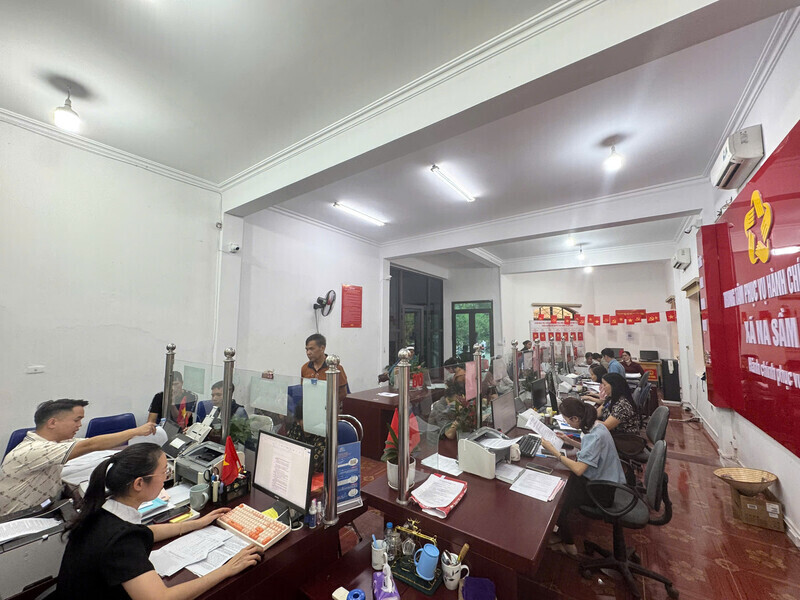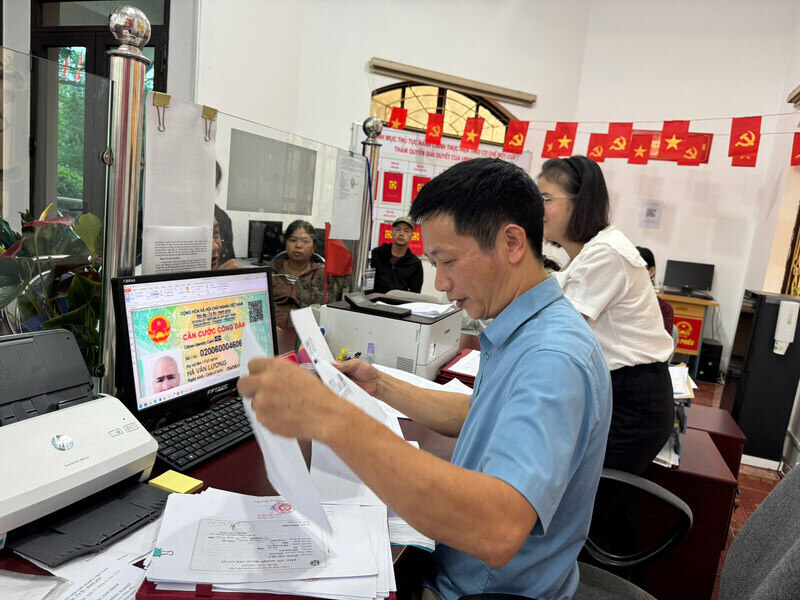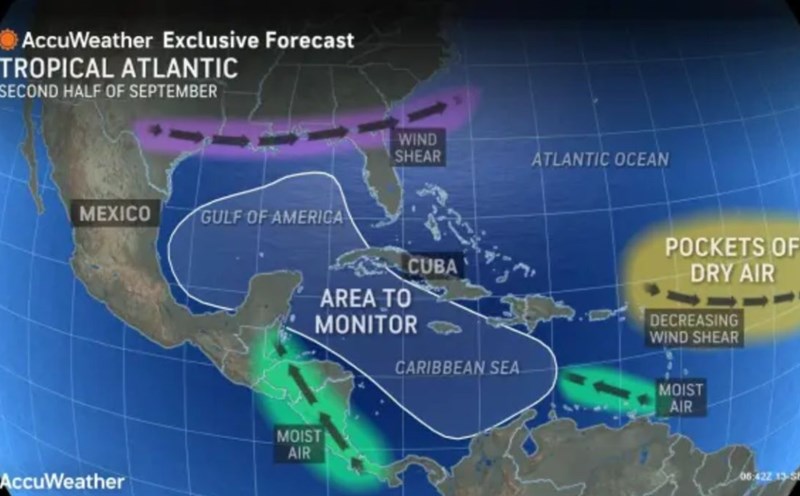In the early days of autumn, at the headquarters of the People's Committee of Na Sam commune (Lang Son province), the atmosphere of procedures for granting Land Use Rights Certificates (red books) was busier than usual. This change comes from the fact that the two-level government model (province - commune) has just been implemented, helping to shorten many intermediary steps.
After only 4 days of submitting an online application to register changes in information about land use rights, Mr. Luong Van Cuong (Na Sam commune) excitedly went to the commune's Public Administration Center to receive the results. It is worth mentioning that his application was returned 3 days earlier than the deadline.

Previously, to get a red book, we had to travel many times, traveling dozens of kilometers to the district, the documents passing between communes - districts - provinces were very time-consuming and costly. Now, just go to the commune to submit documents, all processes are updated online, the staff provide clear instructions, making it less difficult for people, Mr. Cuong shared.
At the "one-stop" department, officers have just instructed people to declare, measure land plots, and supplement documents. Immediately after that, the data is entered directly into the online land management system connected to the provincial Land Registration Office.
According to the new regulations, the time to process the application for a new red book in a mountainous commune is only 10-15 working days, depending on the case. All steps are publicly listed at the headquarters, people can monitor the progress via smartphone or directly in the commune.

Many communes have even applied QR codes to publicize costs, deadlines, and processing procedures to make it easier for people to scan and look up. This is considered an important step forward, contributing to limiting the situation of "land brokerage" and arising costs outside of regulations.
Mr. Dinh Manh Khiem - Head of the Economic Department of Na Sam commune - informed: "Since the implementation of the two-level government, the commune has printed 11 red books for people, including 10 books issued for the first time with a total of 12 plots of land, in the same case of changing the purpose from agricultural land to residential land".
However, Mr. Khiem also frankly acknowledged that after the merger, the area was large, the population was large, and the workload was large, while the full-time staff was limited.
"The commune only has 2 cadres in charge of land and environment, and has to concurrently work in many other areas such as agriculture, land disputes, site clearance, etc. As for the construction licensing area, there are no cadres in charge," said Mr. Khiem.

According to Ms. Nguyen Le Thuy - Deputy Director of the Na Sam Commune Public Administration Center, up to now, the Center has received 73 land-related records, of which 9 records have returned results, 64 records are still within processing time.
However, difficulties are still not small such as sometimes unstable internet infrastructure, the level of information technology of cadres is not uniform, many households lack original documents due to transfer by "handwritten documents" in advance.
In addition, some people have not installed level 2 electronic identification, causing the time to submit and verify documents to be longer.
"We have to work in many jobs at the same time and instruct people, especially the elderly and ethnic minorities, to declare documents. The work is pressureful, but in return, seeing the people happy when holding the red book right in the commune, everyone feels relieved, said Ms. Hoang Phuong Thao - a civil servant at the Na Sam Commune Public Administration Center.











